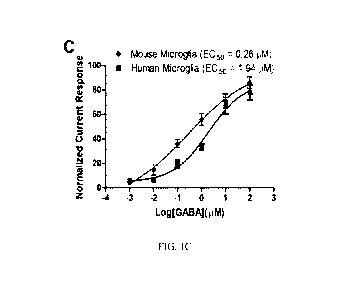Une partie des informations de ce site Web a été fournie par des sources externes. Le gouvernement du Canada n'assume aucune responsabilité concernant la précision, l'actualité ou la fiabilité des informations fournies par les sources externes. Les utilisateurs qui désirent employer cette information devraient consulter directement la source des informations. Le contenu fourni par les sources externes n'est pas assujetti aux exigences sur les langues officielles, la protection des renseignements personnels et l'accessibilité.
L'apparition de différences dans le texte et l'image des Revendications et de l'Abrégé dépend du moment auquel le document est publié. Les textes des Revendications et de l'Abrégé sont affichés :
| (12) Demande de brevet: | (11) CA 3222576 |
|---|---|
| (54) Titre français: | INSTALLATION DE RECIRCULATION AQUACOLE D'EAU DOUCE |
| (54) Titre anglais: | FRESHWATER-RECIRCULATING AQUACULTURE SYSTEM |
| Statut: | Demande conforme |
| (51) Classification internationale des brevets (CIB): |
|
|---|---|
| (72) Inventeurs : |
|
| (73) Titulaires : |
|
| (71) Demandeurs : |
|
| (74) Agent: | PRAXIS |
| (74) Co-agent: | |
| (45) Délivré: | |
| (86) Date de dépôt PCT: | 2022-06-08 |
| (87) Mise à la disponibilité du public: | 2023-01-12 |
| Licence disponible: | S.O. |
| Cédé au domaine public: | S.O. |
| (25) Langue des documents déposés: | Anglais |
| Traité de coopération en matière de brevets (PCT): | Oui |
|---|---|
| (86) Numéro de la demande PCT: | PCT/ES2022/070354 |
| (87) Numéro de publication internationale PCT: | WO 2023281138 |
| (85) Entrée nationale: | 2023-12-06 |
| (30) Données de priorité de la demande: | ||||||
|---|---|---|---|---|---|---|
|
Installation de recirculation d'eau douce du type de celles qui comprennent un module de prétraitement de l'eau provenant d'un réservoir de culture aquacole, un module d'oxydation pour éliminer les contaminants et une recirculation de l'eau douce traitée dans le réservoir de culture, étape préalable pour un module de post-traitement, qui comprend en outre un module de génération électrochimique d'oxydants disposé dans une ligne auxiliaire, hors de la ligne principale de recirculation de l'eau douce traitée, qui est alimenté par une ligne de recirculation d'eau provenant de la sortie du module de post-traitement, le module de génération électrochimique d'oxydants détaché du module d'oxydation, en communication fluidique avec celui-ci au moyen d'une ligne d'alimentation d'oxydants électrogénérés.
Disclosed is a freshwater-recirculating system of the type including: a pre-treatment module for pre-treating water from an aquaculture tank; an oxidation module for eliminating pollutants; and a line for recirculating the treated freshwater to the cultivation tank, before passing same through a post-treatment module. The system also includes a module for the electrochemical generation of oxidants, which is disposed in an auxiliary line, outside the main line for recirculating the treated freshwater, and which is supplied by a line for recirculating water coming from the outlet of the post-treatment module, the module for the electrochemical generation of oxidants being uncoupled from the oxidation module but in fluid communication with same by means of a line supplying electrogenerated oxidants.
Note : Les revendications sont présentées dans la langue officielle dans laquelle elles ont été soumises.
Note : Les descriptions sont présentées dans la langue officielle dans laquelle elles ont été soumises.

2024-08-01 : Dans le cadre de la transition vers les Brevets de nouvelle génération (BNG), la base de données sur les brevets canadiens (BDBC) contient désormais un Historique d'événement plus détaillé, qui reproduit le Journal des événements de notre nouvelle solution interne.
Veuillez noter que les événements débutant par « Inactive : » se réfèrent à des événements qui ne sont plus utilisés dans notre nouvelle solution interne.
Pour une meilleure compréhension de l'état de la demande ou brevet qui figure sur cette page, la rubrique Mise en garde , et les descriptions de Brevet , Historique d'événement , Taxes périodiques et Historique des paiements devraient être consultées.
| Description | Date |
|---|---|
| Inactive : Page couverture publiée | 2024-01-17 |
| Inactive : CIB en 1re position | 2024-01-02 |
| Inactive : CIB attribuée | 2023-12-13 |
| Inactive : CIB attribuée | 2023-12-13 |
| Inactive : CIB attribuée | 2023-12-13 |
| Demande reçue - PCT | 2023-12-13 |
| Exigences applicables à la revendication de priorité - jugée conforme | 2023-12-13 |
| Lettre envoyée | 2023-12-13 |
| Exigences quant à la conformité - jugées remplies | 2023-12-13 |
| Demande de priorité reçue | 2023-12-13 |
| Déclaration du statut de petite entité jugée conforme | 2023-12-06 |
| Exigences pour l'entrée dans la phase nationale - jugée conforme | 2023-12-06 |
| Demande publiée (accessible au public) | 2023-01-12 |
Il n'y a pas d'historique d'abandonnement
Le dernier paiement a été reçu le 2024-05-14
Avis : Si le paiement en totalité n'a pas été reçu au plus tard à la date indiquée, une taxe supplémentaire peut être imposée, soit une des taxes suivantes :
Veuillez vous référer à la page web des taxes sur les brevets de l'OPIC pour voir tous les montants actuels des taxes.
| Type de taxes | Anniversaire | Échéance | Date payée |
|---|---|---|---|
| Taxe nationale de base - petite | 2023-12-06 | 2023-12-06 | |
| TM (demande, 2e anniv.) - petite | 02 | 2024-06-10 | 2024-05-14 |
Les titulaires actuels et antérieures au dossier sont affichés en ordre alphabétique.
| Titulaires actuels au dossier |
|---|
| APRIA SYSTEMS, S.L. |
| Titulaires antérieures au dossier |
|---|
| ANA MARIA URTIAGA MENDIA |
| INMACULADA ORTIZ URIBE |
| PEDRO MANUEL GOMEZ RODRIGUEZ |
| RAQUEL IBANEZ MENDIZABAL |